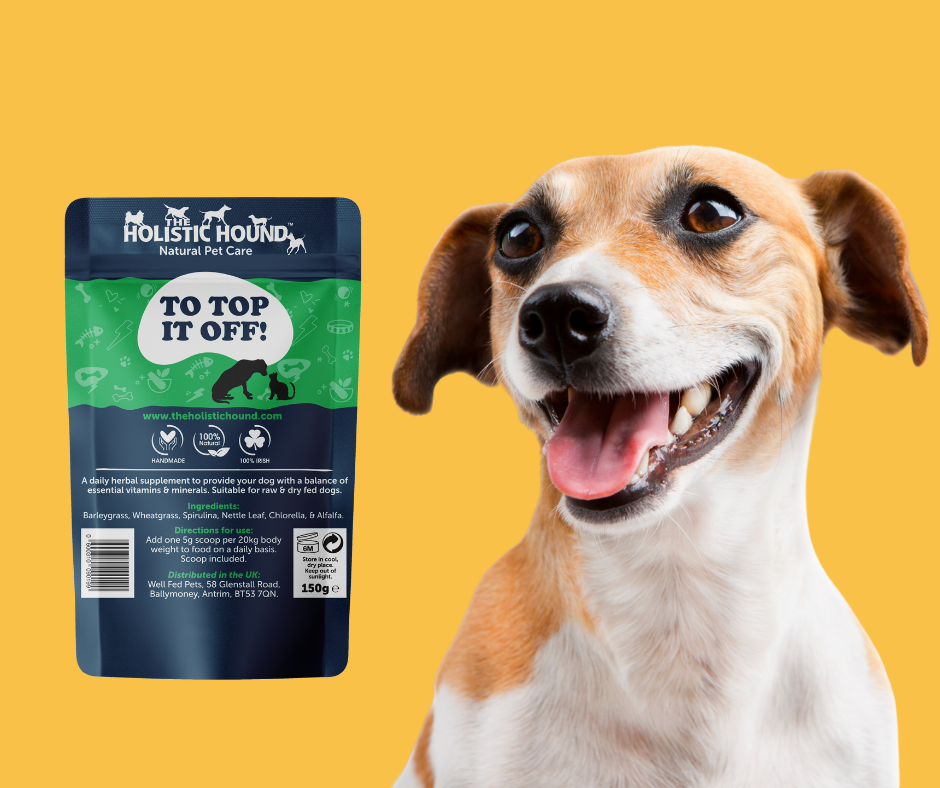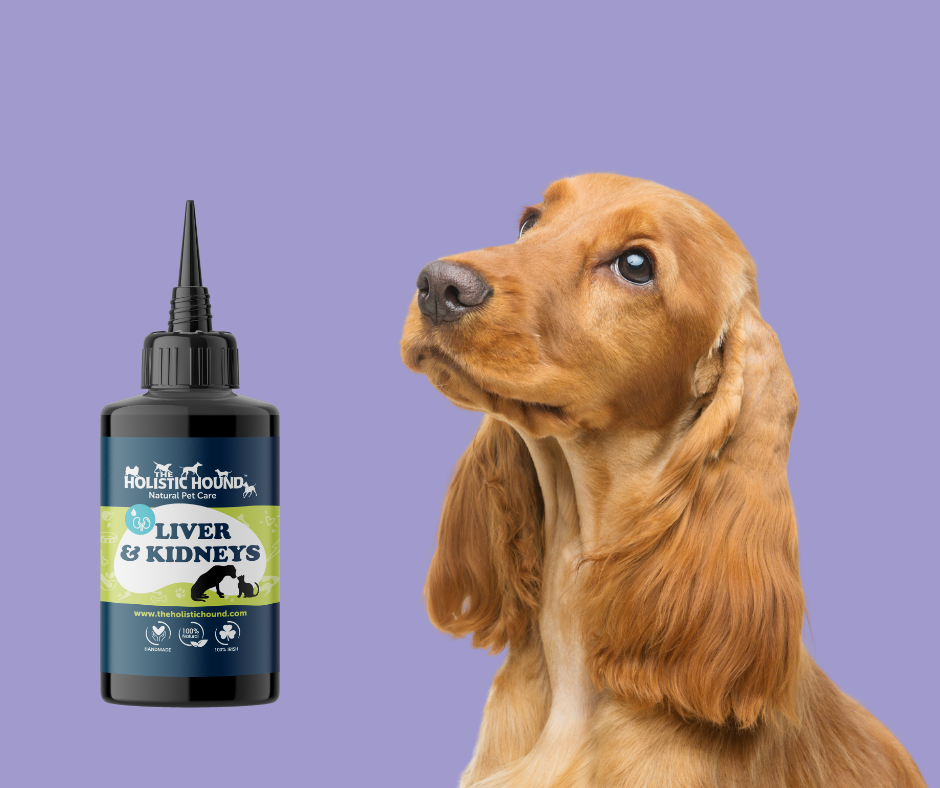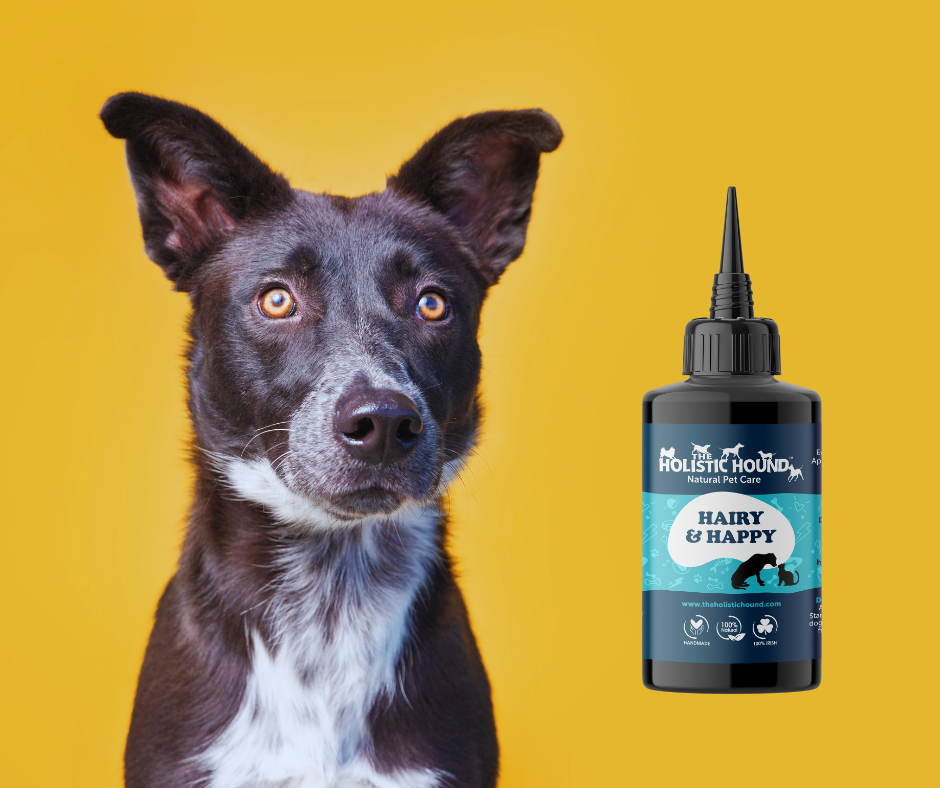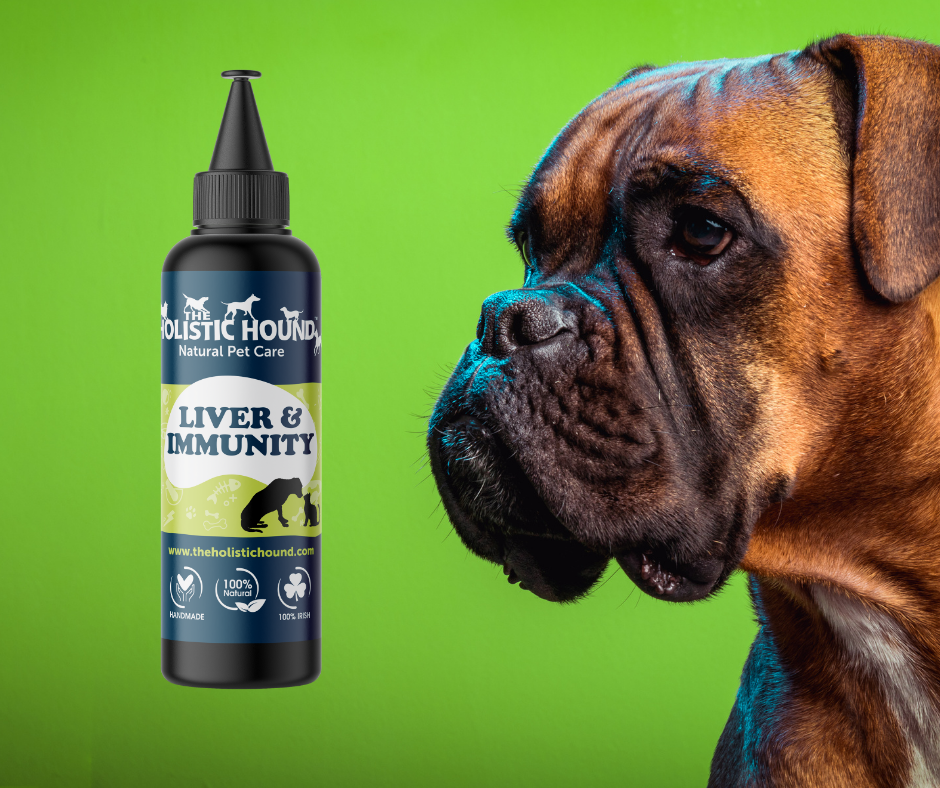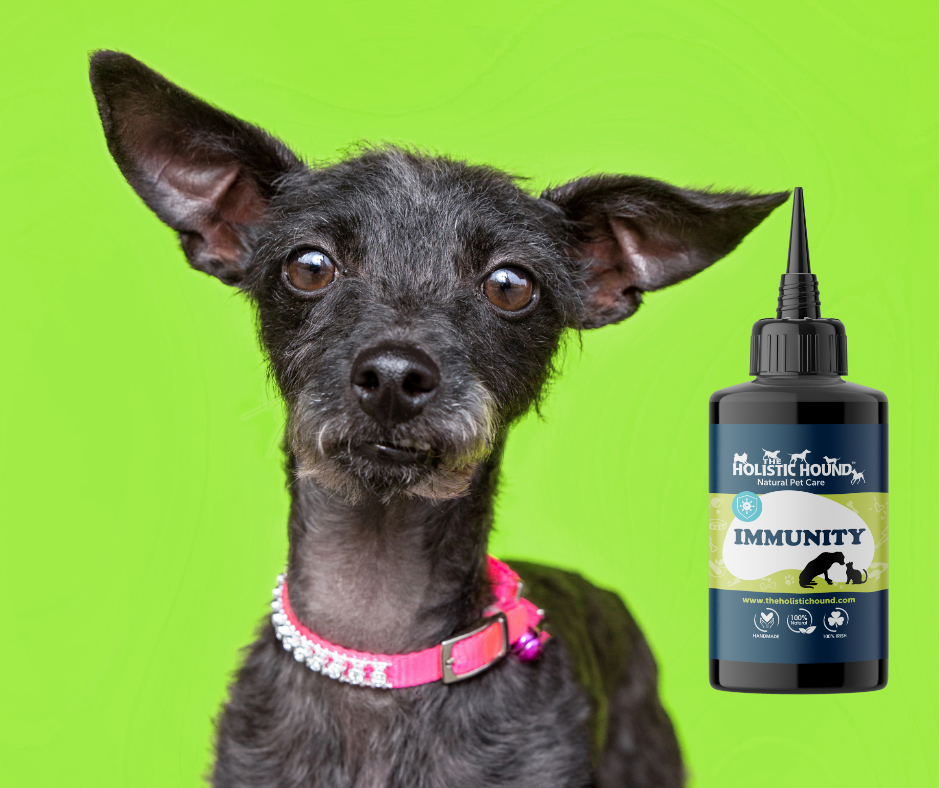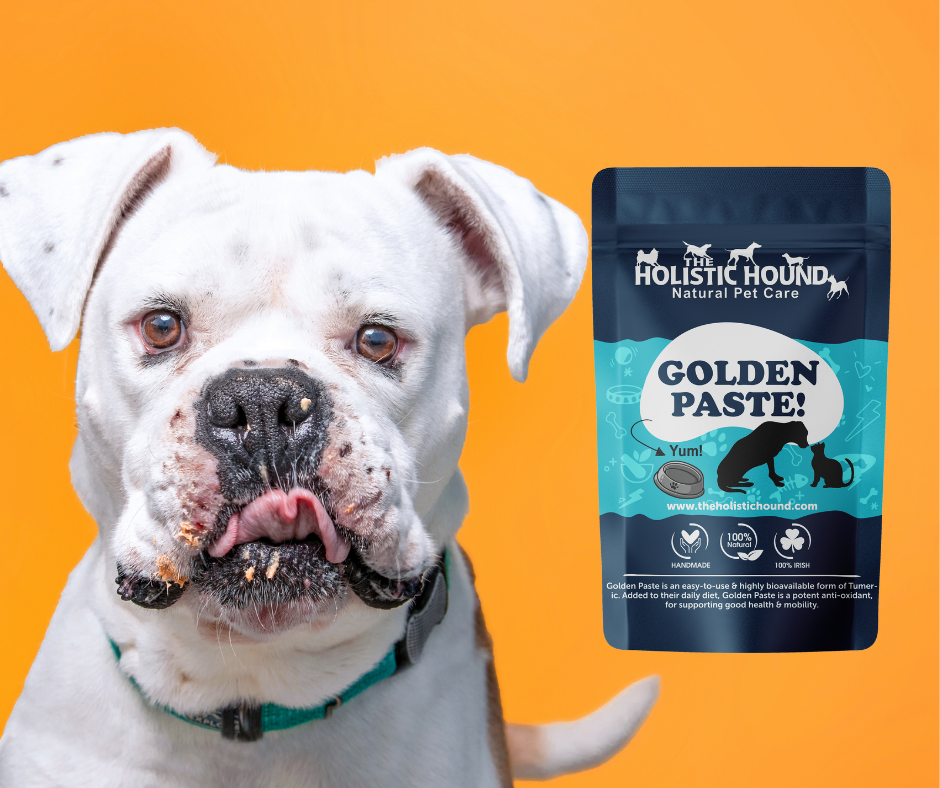

Lets Talk Ticks!!!
Ticks are a dogs nemesis, they are irritating, unsightly and annoying, but most worryingly they can cause fatal illness in our dogs.
To top that off, they are often treated using harsh and systemic chemicals, which in turn can be just as harmful to our pets.
What you need to know about Ticks!
There are 900 species of ticks in the world…eeek! And yuk!!!
- They are broadly divided into two groups - the family Ixodidae, known as "hard ticks," and the family Argasidae, known as "soft ticks.
- Soft ticks reside in animal nests; hard ticks go on a quest to find their hosts! It is in the main hard ticks that latch on to our dogs.
- Adult Ixodes ticks are most active April to July – although they can be active all year round in some areas of the world
- Most infections are via the bites of immature ticks called nymphs. Nymphs are tiny (less than 2 mm) and difficult to see – literally the size of a pin head; and of most concern for our dogs, on a breezy day they can be carried through the air!
- Adult ticks can also transmit Lyme disease bacteria, but they are much larger and are more likely to be discovered and removed before they have had time to transmit the bacteria.
- Nymphs primarily feed during the spring and summer months. Whereas adult Ixodes ticks are most active during the cooler months of the year.
They are 100% opportunistic, and will seize any opportunity afforded to them to latch onto a warm blooded animal. This is why “tick bite” prevention is so very difficult. However, the bite is not necessarily the key issue to deal with, it is how long the tick is attached that is key.
The tick feeding process is what makes them very effective at transmitting infection:
Depending on the tick species and its stage of life, preparing to feed can take from 10 minutes to 2 hours. When the tick finds a feeding spot, it grasps the skin and cuts into the surface. The tick then inserts its feeding tube. Many species also secrete a cement-like substance that keeps them firmly attached during the meal. The feeding tube can have barbs, which help keep the tick in place…. which is why pulling them out can be so tricky!
Ticks secrete small amounts of saliva with anaesthetic properties so that the animal or person can’t feel that the tick has attached itself. If the tick is in a sheltered spot, it can easily go unnoticed.
A tick will attach to its host and suck the blood slowly for several days. If the host animal has certain bloodborne infections, such as the bacteria that cause Lyme disease, the tick may ingest the pathogen and become infected.
After feeding, the tick drops off and prepares for the next life stage. At its next feeding, it can then transmit the infection to the new host. Once infected, a tick can transmit infection throughout its life.
In most cases, the tick must be attached for 36 to 48 hours or more before the disease bacterium can be transmitted. At the same time as feeding, they regurgitate excess water that has been extracted from the blood meal into the wound. This process increases the possibility for the transmission of pathogens from a tick to its animal host.
Transmission of a pathogen generally does not occur until an infected tick has attached and fed for at least 24 hours (the earliest transmission of Lyme Disease has been documented in gerbils to occur at 16.5 hours after initial attachment).
An exception to this is if a tick becomes partially engorged, becomes detached and then attaches to another host, where disease transmission will occur much earlier in the feeding process. However, this is quite rare as I am sure you will know they are tenacious little buggers.
The probability of a host becoming infected with the Lyme-causing bacteria (Borrelia burgdorferi) appears to increase to approximately 10% after a tick has been attached for 48 hours. The risk jumps to 50% after 63-67 hours, 70% by 72 hours and 90% for a complete feed.
What diseases are we talking about?
Most people associate Ticks with Lymes disease. However, as well as Lymes they can also transmit Ehrlichiosis, canine babesiosis (aka piroplasmosis)
Lyme disease is not a new disease and was documented in Europe, known by various different names, in the early 20th century. It is caused by a bacterium called Borrelia burgdorferi. Lyme disease can be very difficult to diagnose as it affects so many organs. Diagnosis is usually based upon a history of a tick bite along with typical symptoms including polyarthritis (or “shifting lameness”), fever and anorexia. More serious symptoms can also occur when the kidneys, heart or nervous system are involved. A specific blood test looking at antibodies to this bacterium may be checked to help confirm the diagnosis. Lyme Disease is treated using a specific antibiotic (Doxycycline) which has to be given for at least 4 weeks
In Spain and France they also have Babesiosis and Erlichiosis. Babesiosis is caused by a rickettsial parasite (somewhere between bacteria and viruses on an evolutionary scale), and Erlichiosis is due to a protozoal parasite (single-celled organism).
Symptoms can be vague:
- Fever, lethargy, idiopathic shifting lameness. Anorexia/pale gums… blood loss with a high tick burden; lack of appetite, swollen belly, unusual coloured urine & stools
- More serious symptoms can also occur when the kidneys, heart or nervous system are involved. Particularly if left undetected.
- A specific blood test looking at antibodies to this bacterium may be checked to help confirm the diagnosis. This needs to be requested, so if you think there is a chance you could have a tick borne disease please push your Vet to check properly.
- A “bullseye” rash around the bite area (an expanding red area might appear that sometimes clears in the centre, forming a bull's-eye pattern) can sometimes indicate disease transmission, but this is not in all cases – so never assume!
The other recommendation is to keep any ticks you find in a jar if you live in a high risk area (where transmission and infection is known to be rife). They can then be tested if need be. Personally, I want them dead as soon as possible!
So How do You Protect Your Dog?
Ticks find their hosts by detecting: body heat, the carbon dioxide you exhale with each breath and the ammonia in your sweat, and even pheromones.
As we said earlier, these are opportunistic creatures, so there is no magic wand.
A 6 tier approach is the most comprehensive to minimise risks:
- Avoidance: reduce risk by not walking in high risk areas such as long grass, woodlands or areas where there is a prevalence of ticks or tick carrying animals (deer, cattle etc.)
- Elimination: Keeping areas clean and planting can help to minimise tick numbers. Pyrethrins are natural compounds found in certain types of flowers, like chrysanthemums, tansy, geraniums that can kill and repel fleas, ticks, and other parasites; so get planting!
- Topical: Use of essential oils can be effective
- Geranium: highly effective at deterring ticks in a study published in the Journal of Agricultural and Food Chemistry. Geranium has natural insect repellent, antiseptic and anti-inflammatory properties.
- Eucalyptus: Some research suggests that a 30% lemon eucalyptus oil preparation can be as effective as DEET
- Palo Santo Essential Oil ( Bursera graveolens ): Palo Santo has anti-infectious, anti-viral, immune-stimulant and insect repelling properties. Very effective at removing ticks
However, you should NEVER apply essential oils directly to a dog for this purpose. Ideally you need these to be the undiluted oils so use a bandana or put a few drops on the outside of their collar; if you are using a spray, make sure it is sufficiently diluted. Also as they are volatile oils their effectiveness doesn’t last, they evaporate! Be aware of this if you are going on a long walk!
Yarrow tincture (yarrow herb extracted in alcohol or glycerine) can also be sprayed directly onto the dog; this is not a volatile oil and allegedly it can be more effective than Deet!
Dietary Solution and Supplements:
- Garlic – Garlic given as a dietary supplement makes the dog less appealing to ticks. Ticks and fleas are sightless and deaf, they tune in to the fatty smell emitted by warm blooded animals, in their sweat; and that is how they find their host. Garlic (and ACV below) help to mask this odour – when metabolized the garlic takes on a distinctive odour and bitter flavour that fleas and ticks find very unattractive – the garlic odour reflects the alicin content which is toxic to insects. And because garlic is a diaphoretic, it actually makes the body sweat!! Garlic also helps enhance the immune system; a dog with a healthy immune system is much better placed to deal with invasion
- Apple Cider Vinegar – ACV is anti-oxidant, antimicrobial, antibacterial, anitfungal. antiinflammatory, and antiparasitic and is also synthesized through the skin to change the overall sweat smell. With a ph 3.1 to 5 it can soothe a dog’s overly alkalized digestive tract – increases the stomach’s acid levels which results in better absorption, and promotes the growth of beneficial bacteria; leading to a healthier dog overall
- Echinacea – immune modulating, and is key to fending off any tick-borne illness. Dogs with a weak immune system are prone to develop complications Research studies have indicated a reduced response of the immune system to Borrelia burgdorferi in patients with a weak immune system.
Some people also like to use Brewers Yeast as this has also been found to be effective at repelling fleas and ticks – however, despite positive scientific results there is no clear understanding of how it works! There are also potential side effects of using brewers yeast, and should not be given if your dog is immunocompromised, prone to yeast infections, or has yeast allergies, or has a sensitive tummy.
Note: When using dietary solutions they take a few weeks to build up in your dog, so recommend starting at least 2 weeks before tick season, and then they must be maintained throughout the season.
Reduce all other immune system stresses; the more a dog’s immune system is compromised the less equipped it is to deal with parasite invaders. Remove other needless chemicals and vaccines; ensure a nutritionally appropriate diet and treats are given. And also make sure their teeth are clean as plaque hammers the immune system daily.
CHECK… CHECK AGAIN… AND CHECK ONCE MORE. Ticks are opportunistic, therefore no product should promise that it will stop a tick from biting. Therefore, even with all the above steps in place you may still get a tick biting and holding on! So, ensure that you check after every walk when you know ticks are prevalent. You have that window of opportunity of at least 24 hours. I highly recommend getting a Tom OTick twizler tool, they are cheap and cheerful and very good at getting the whole tick out very easily and cleanly. Make sure in particular you check your dog’s warm areas (arm pits, around neck) gums, ears, and toes, along with the rest of his furry self.
All of the above should help to keep your four legged friends safe and out of harms way, so that you can continue to enjoy your walks together.
Feeling Itchy???
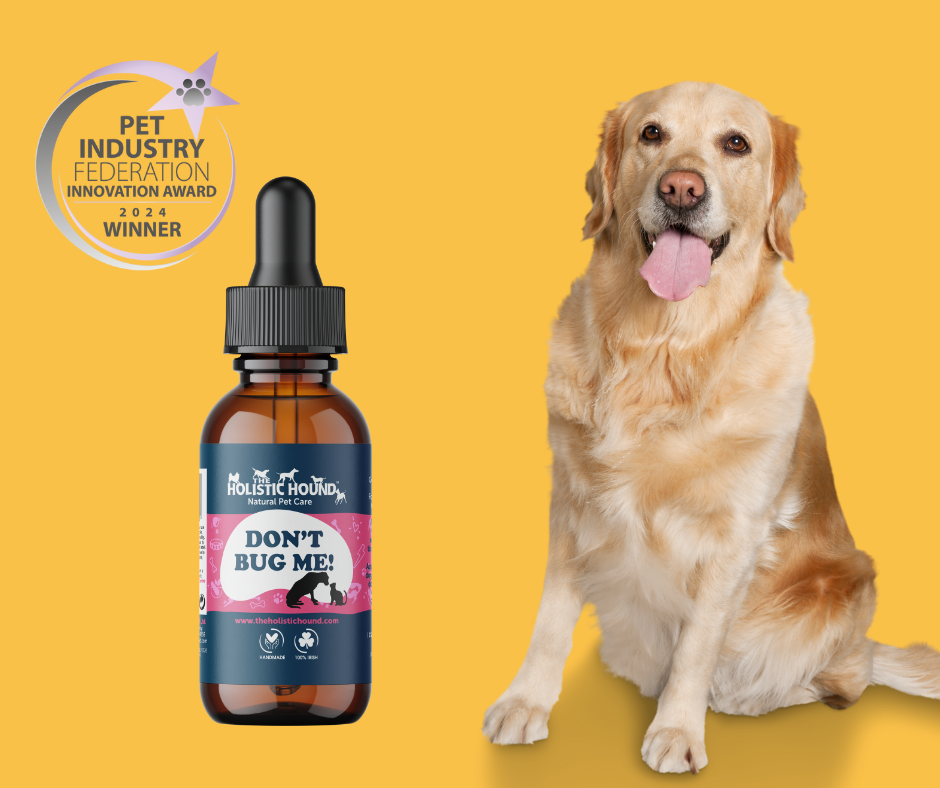
Don't Bug Me

Mite-ee Stuff

Wormwood ++



